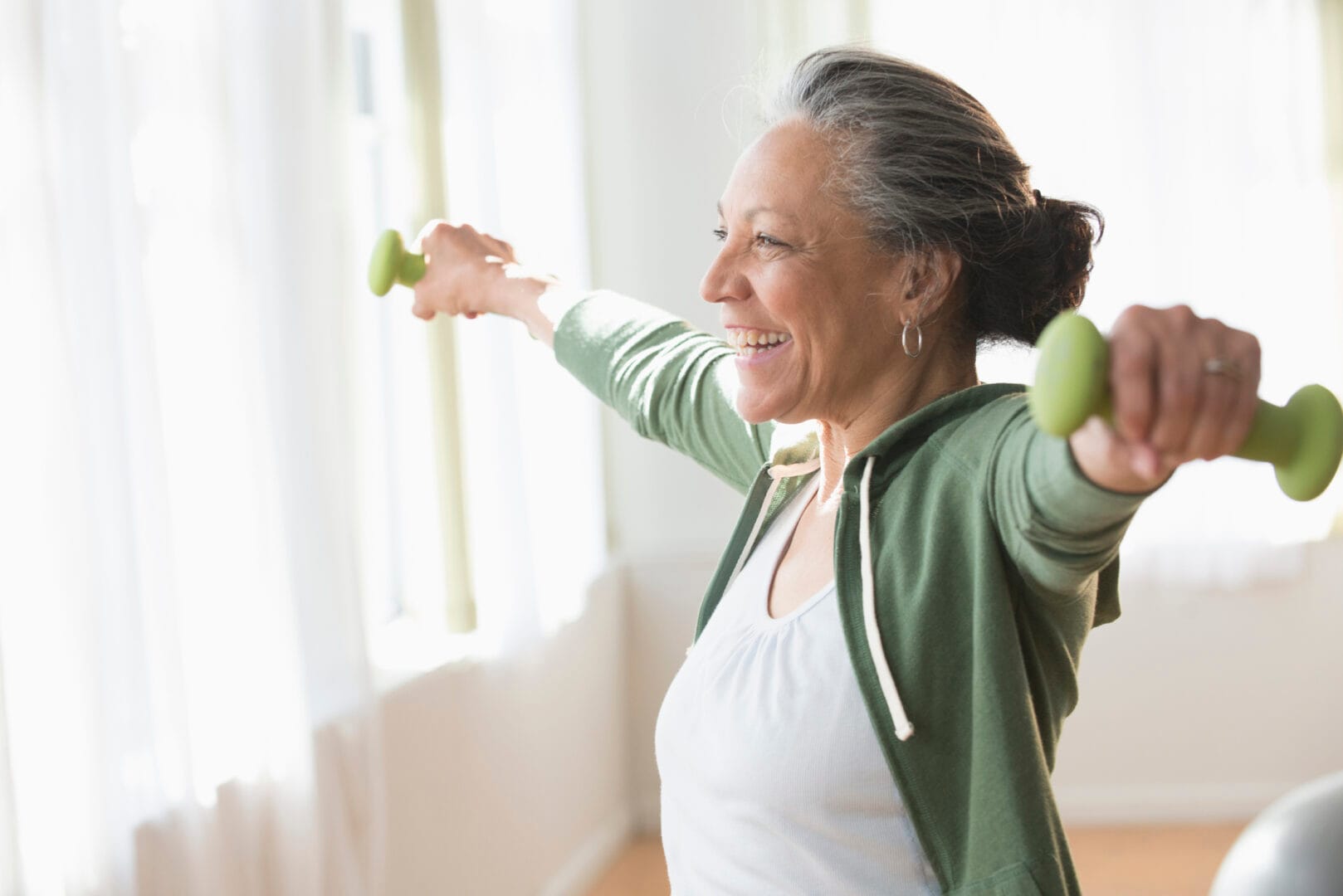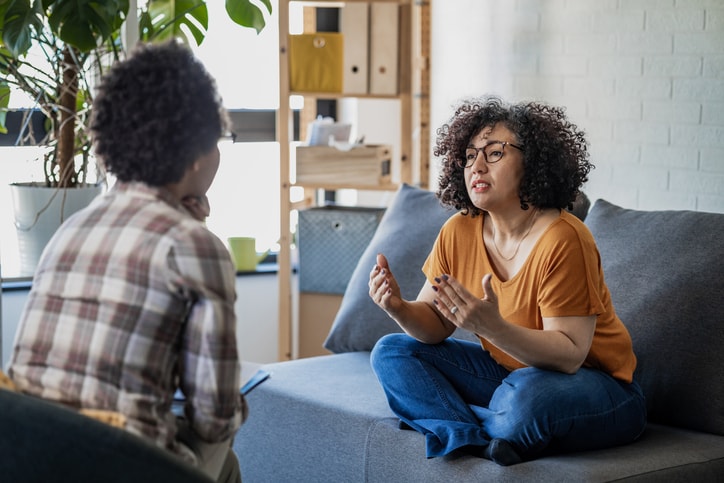When it comes to ageing, there’s a pervasive narrative that paints older people as being on a steady decline, with their best years behind them and the road ahead littered with health complications. But that is an incredibly narrow point of view. In fact, older age can bring some of the most fulfilling, thriving years of a person’s life — so long as that person has prioritised a few aspects of their health.
Of course, there are some conditions that can be considered “normal ageing”, like changes in vision or hearing. But there are plenty of other health complications that can be reduced or avoided entirely if you plan ahead, seek elderly health tips and take appropriate preventive measures.
For example, falls are a big risk but staying physically active helps keep us strong as we age and also decreases the risk of falling. And whilst memory loss is more likely to occur as we age, keeping your brain sharp by reading and learning new things helps, as does staying socially active and engaged with others.
Read on for the top steps that caregivers can take to help promote healthy ageing and prevent health complications in the older people under their care. Here are our 5 health tips for seniors to stay healthy.
1. Keep in close contact with their GP or primary care professional
Studies have shown that having a GP or primary care professional can improve the prognosis for older people.
There are certain risks as we age that can sometimes be decreased if an older person’s primary care professional has knowledge of the ageing process and the related risks, and can advise them on the best ways to decrease those risks. As we age, it is important to have a good relationship with a primary care professional to discuss elderly health screenings and other preventive services that are recommended for older people.
2. Prioritise physical activity recommendations for older adults and focus on knee and hip joint mobility
When an older person’s physical activity level decreases, it can often weaken the muscles surrounding the knees, forcing the tissue to work harder. In this instance, people with arthritis can experience worse symptoms and those without arthritis can develop tendonitis.
Working on flexibility and range of motion with the knee and hip joints can lead to improved quality of life. Problems with your hip can result in problems with your back, and flexibility is important to perform everyday activities like putting on your socks. And the reality is that daily chores become even more difficult if you lose flexibility in your knees.
One physical activity for older people that focusses on knee and hip joint mobility without putting too much pressure on the knee is riding a stationary bike. Try to do this for at least 15 to 20 minutes at a time, with a goal of 30 minutes three to four times per week.
However, even though older people might feel the need to take it slow, it’s important that they feel some exertion. Multitasking (e.g. reading a newspaper) is a no-no, as older people should be focused on their workout and building up a sweat.
As long as the older person doesn’t have severe arthritis in their knees, about 30 minutes of brisk walking a day can work wonders in supporting their health.
Walking and stationary bike work aren’t the only activities designed to boost strength and stability. Check out this roundup of exercises for older adults to try, suitable for all fitness abilities, as well as ideas for indoor activities that are perfect for autumn and winter — when getting outside might be more of a challenge.
3. Prepare small, fibre-packed and veggie-packed meals
It’s important to note that a person’s digestive tract undergoes changes in their later years, which calls for changes in the way they eat as well.
Older people often do better with small, frequent meals or snacks throughout the day, as opposed to three large meals. This is because there are changes in our digestive system and how we process foods as we age.
What’s more, digestive issues often stem from weakened gut muscles, which comes with age. But there’s a helpful fix: older people should include more fibre in their diet, as the bulkiness from fibre stimulates greater muscle contractions.
Here are a few fibre-rich foods to weave into an older person’s diet:
- Oats
- Quinoa
- Beans
- Broccoli
- Apples
- Berries
Additionally, BetterHealth recommends a few other key nutrition tips to ensure a healthy diet for elderly people.
- Eat a variety of foods from the five food groups: Aim to incorporate lean protein (like seafood, eggs, turkey, chicken and tofu), fruits and vegetables, whole grains and dairy into an older person’s diet throughout the day.
- Limit certain foods and drinks: Reach for products that are lower in salt, sugar and saturated fat — especially processed foods — and watch your alcohol intake.
- Consider taking supplements: Consult their GP if you suspect they may be lacking certain nutrients.
For inspiration, take a look at some quick and easy meal ideas for older adults.
4. Plan for changes in taste perception and thirst that come with ageing
One consideration to take is that a person’s taste buds (and thirst perception) will shift with age, so it’s important to shift eating and drinking habits, too. We tend to have less sense of thirst and taste sensations as we age, making it even more important to get enough fluids throughout the day.
Although the amount a person should consume is highly dependent on a number of factors (again, something a GP can assist with!), BetterHealth recommends about six to eight glasses of fluids a day, which can include water, low-fat milk and sugar-free drinks like tea and coffee.
It’s also common for older adults to have a diminished taste for salt, causing them to continuously reach for the shaker. A smart tip for when a salt craving hits is to substitute salt with lemon in dishes.
5. Stay on top of health screenings and vaccinations for older people
Routine screenings can alert older people to potential health problems, such as prostate cancer, breast cancer, diabetes and heart disease. And certain screenings become even more important as the years go by. For example, bone density scans are very important as we age, as they can detect whether bones are becoming weak. If osteopenia or osteoporosis is identified on a bone density screening, measures can be taken to help increase bone strength, which can help prevent fractures.
The most important thing an older person can do is stay in communication with their GP to find out what older adult health screenings and vaccinations to prioritise. Here are a few common ones:
- Abdominal aortic aneurysm (AAA) screening: An AAA screening is to check for elevated risk of aneurysms. Although there is no official screening program in Australia for AAA, a doctor might suggest an ultrasound scan of the abdomen.
- Bowel cancer exam: Risk increases with age, and the odds are even higher for older people with a history of tobacco smoking, a low-fibre diet or untreated digestive inflammatory diseases. Screening is offered every two years to everyone aged 50 to 74.
- Breast screening (women): Women over the age of 40 can have a free mammogram every two years , and women aged 50 to 74 are regularly invited to have a screening.
- Bone density scan: healthdirect recommends that people over 50 who are at high risk of developing osteoporosis — having had a broken bone or being a smoker, to name a few — do a bone density scan. Older postmenopausal women are most at risk, even though osteoporosis can affect anyone of any age.
- Shingles, COVID, pneumonia and flu vaccines: It is important to discuss not only recommended vaccinations with an older person’s GP, but the recommended timeline for each of them, as well as to remember that some of them need to be repeated, such as the yearly flu vaccine. Here’s the Australian Government’s general timeline for all vaccines.
The bottom line is that ageing doesn’t have to be synonymous with slowing down. Older people can take plenty of steps, from keeping up with recommended screenings to making regular exercise a part of their routine, which will not only avoid chronic health issues, but also boost their physical and mental health and promote healthy ageing.

